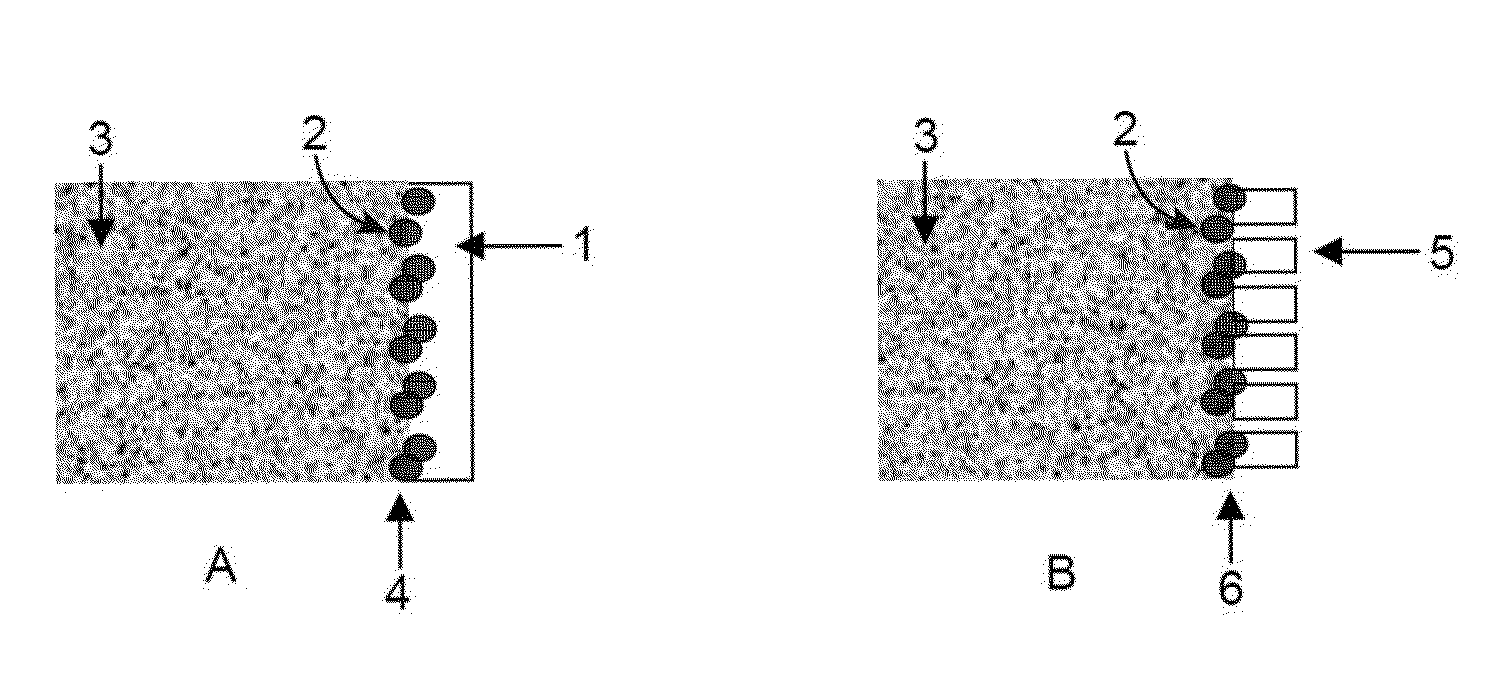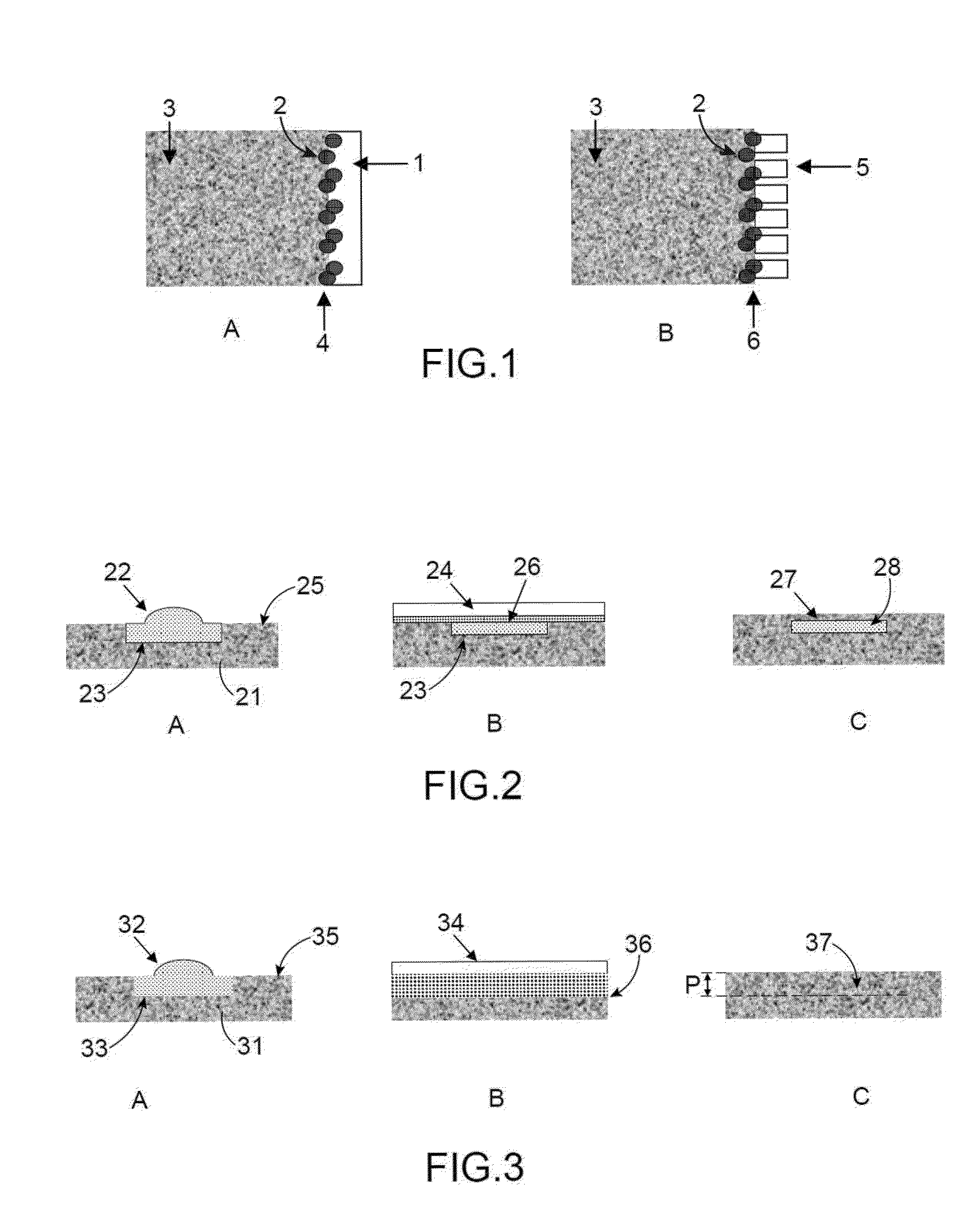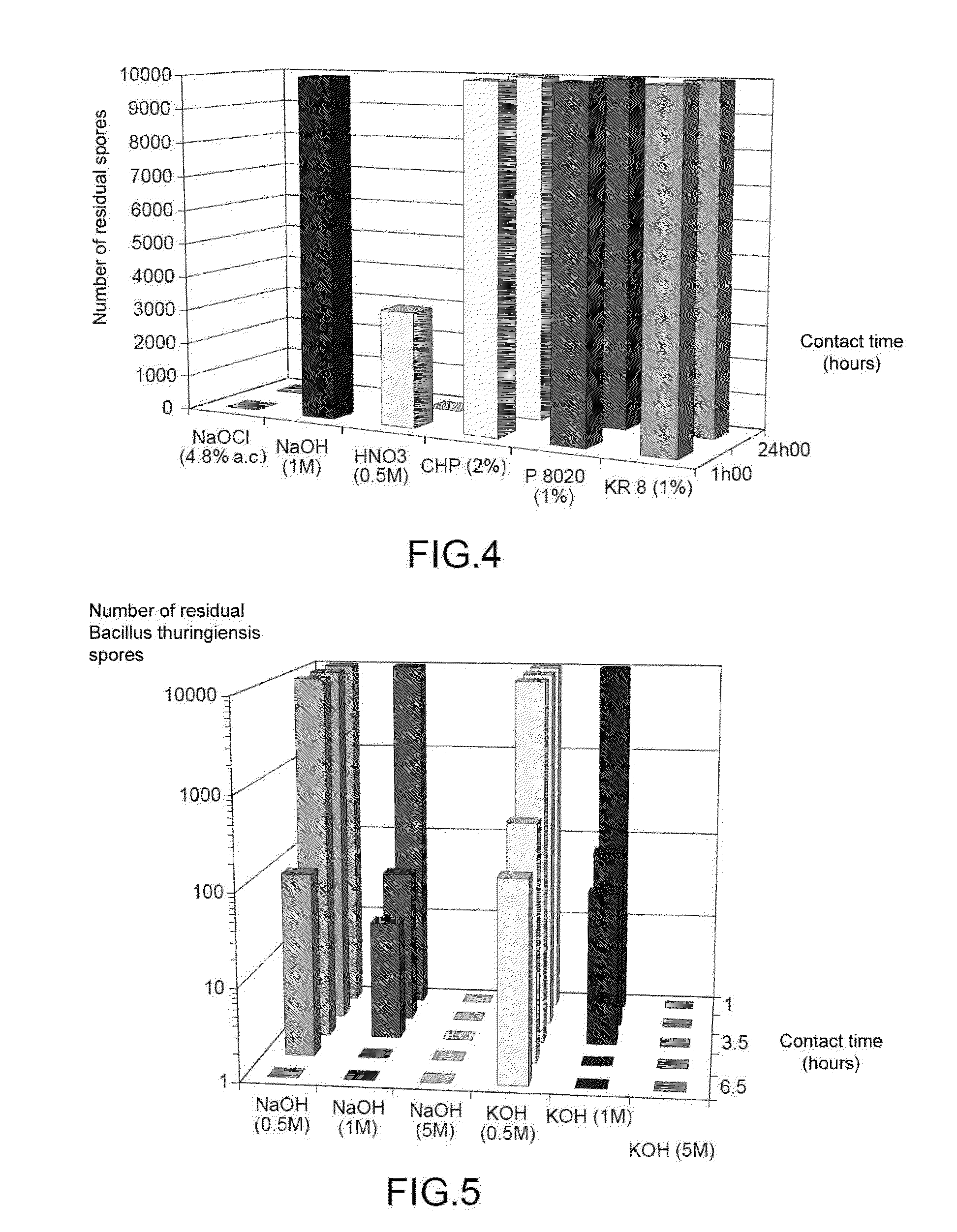Biological decontamination gel and method for decontaminating surfaces by using this gel
a technology of biodegradation gel and surface, which is applied in the direction of biocide, plant growth regulator, animal husbandry, etc., can solve the problems of limited treatment technique, particularly suitable for the care of persons, and the risk of spreading toxic agents into the environmen
- Summary
- Abstract
- Description
- Claims
- Application Information
AI Technical Summary
Benefits of technology
Problems solved by technology
Method used
Image
Examples
example 1
[0247]In this example, the kinetics for inhibiting spores of Bacillus thuringiensis are studied, in different liquid biocidal solutions containing different active decontamination agents at various concentrations, i.e.: 4.8% NaOCl, 1M NaOH; 0.5 HNO3, 2% HPC (hexadecyl pyrdinium chloride). Comparative solutions containing the surfactant Pluronic® P 8020 at 1%, or the surfactant KR8 (ethoxylated fatty alcohol) at 1% were also used.
Experimental Procedure:
[0248]The experiment consists of putting, with stirring, 2×106 spores in contact with 1 ml of liquid biocidal solution.
[0249]At the end of 1 hour and of 24 hours of stirring, samples were taken in order to reveal the biological activity of the mixture. The development, revelation then consists of depositing a drop of mixture on a nutritive medium (agar gel) and of counting, at the end of an incubation period of 16 hours at 30° C., the number of colonies formed. Each of the colonies being the result of an inactivated spore.
[0250]The res...
example 2
[0252]In this example, the kinetics of inhibition of spores of Bacillus thuringiensis are studied, in various liquid biocidal solutions containing different bases at various concentrations, i.e. 0.5M NaOH, 1M NaOH; 5M NaOH, 0.5M KOH, 1M KOH and 5M KOH.
[0253]The experimental procedure used is similar to the one described above in Example 1. Only the number of mixture samplings is increased (1 hour, 2 hours, 3 hours, 4 hours, 5 hours) so as to determine the kinetics for inhibiting the spores in the relevant biocidal medium.
[0254]The results of the tests are given in FIG. 5 where the number of residual spores is given for each of the biocidal solutions at contact times of 1 hour, 2 hours, 3 hours, 4 hours, 5 hours.
[0255]FIG. 5 shows that the increase in the concentration of biocidal agent gives the possibility of considerably increasing the inhibition rates of the spores of Bacillus thuringiensis.
example 3
[0256]In this example, the influence of the sodium hydroxide concentration on the drying time in a gel of the present invention is studied.
[0257]The gel has the following composition in mass percentages:[0258]Alumina: 14%[0259]Sodium hydroxide solution (variable concentration): 85%[0260]Surfactant (Pluronic® P8020): 0.7%[0261]Super-absorbent polymer: Sodium polyacrylate Norsocryl® S35: 0.3%.
Experimental Procedure:
[0262]The gels with a variable sodium hydroxide concentration (0 M, 1 M, 5 M and 10 M) are spread out on an inert metal support over a controlled thickness of 1 mm. The metal support containing the gel film is then placed in a weathering, climatic, enclosure equipped with a precision balance which ensure the tracking of the mass loss of the gel over time. The weathering enclosure is regulated to a temperature of 22° C. and to a relative humidity of 60%.
[0263]The curves of FIG. 6 show that the hygroscopicity of sodium hydroxide (but also of potassium hydroxide) slows down th...
PUM
 Login to View More
Login to View More Abstract
Description
Claims
Application Information
 Login to View More
Login to View More - R&D
- Intellectual Property
- Life Sciences
- Materials
- Tech Scout
- Unparalleled Data Quality
- Higher Quality Content
- 60% Fewer Hallucinations
Browse by: Latest US Patents, China's latest patents, Technical Efficacy Thesaurus, Application Domain, Technology Topic, Popular Technical Reports.
© 2025 PatSnap. All rights reserved.Legal|Privacy policy|Modern Slavery Act Transparency Statement|Sitemap|About US| Contact US: help@patsnap.com



